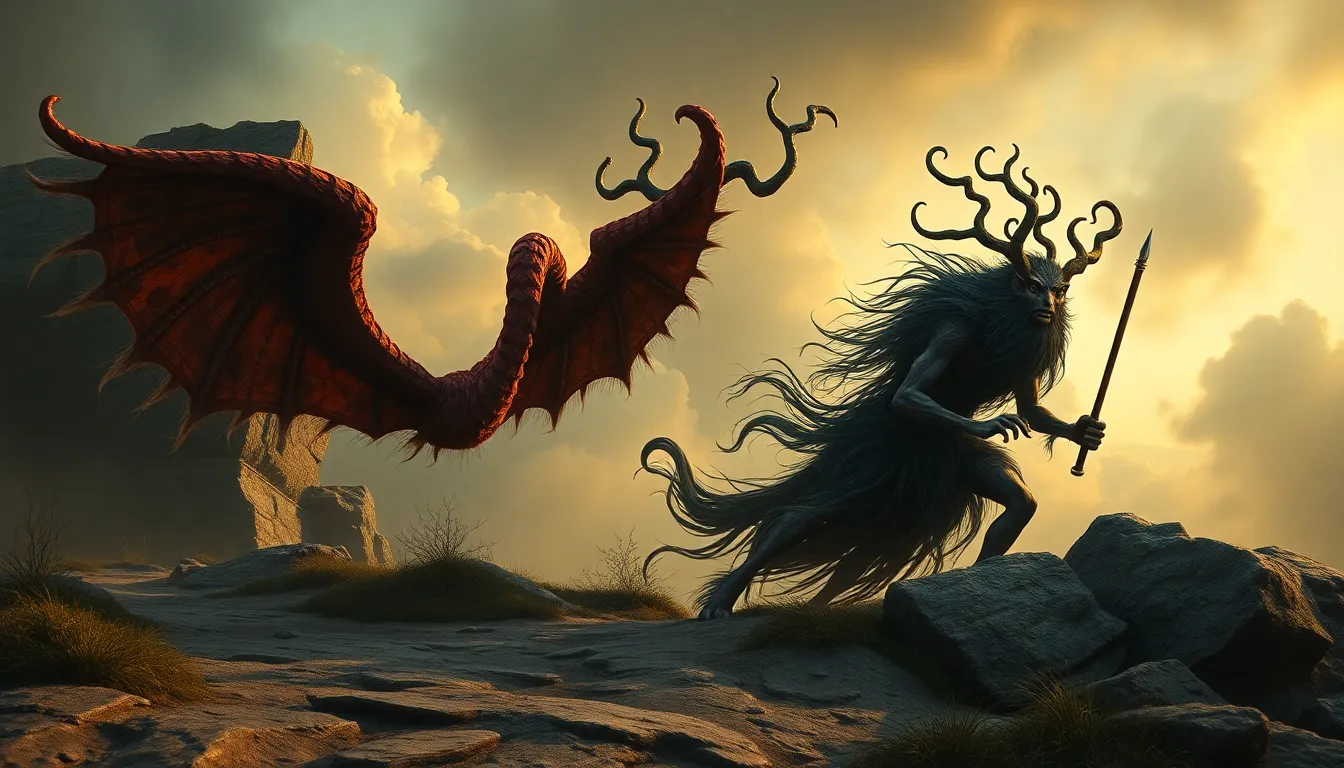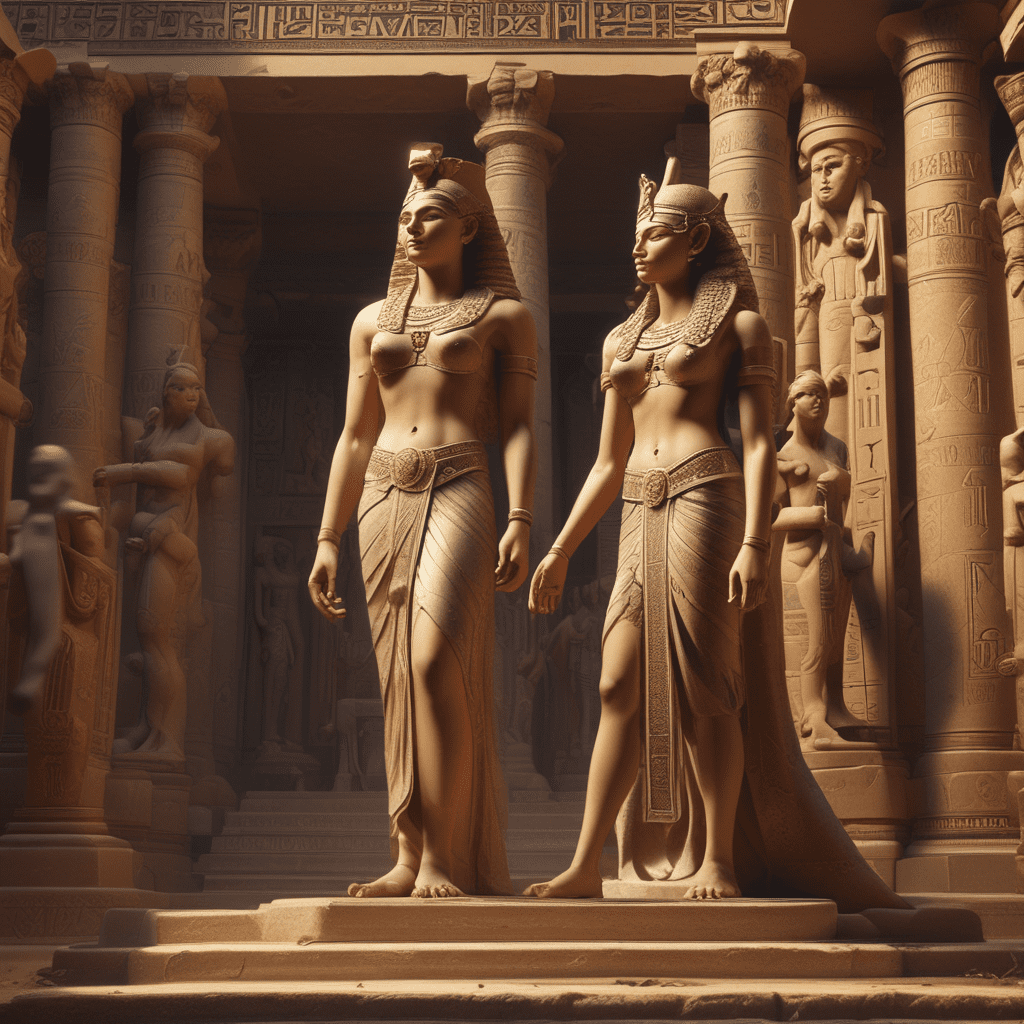The Cultural Significance of Trickster Myths
I. Introduction to Trickster Myths
Trickster myths are stories that feature a central character known as a trickster, who embodies qualities of cunning, deception, and mischief. These narratives often explore themes of chaos, morality, and social order, providing insights into the human condition.
The trickster archetype appears in various cultures around the world, from the clever Anansi of African folklore to the mischievous Coyote of Native American traditions. Tricksters often operate outside the bounds of societal norms, challenging established rules and conventions.
This article aims to explore the cultural significance of trickster myths, examining their historical context, role in society, and relevance in modern storytelling.
II. Historical Context of Trickster Myths
The origins of trickster figures can be traced back to ancient folklore, where they served as both entertainers and moral educators. Over time, these figures have evolved, reflecting changes in societal values and beliefs.
Comparing ancient and modern interpretations reveals how tricksters have adapted to contemporary contexts while retaining their core characteristics. For example, where ancient tricksters might have been revered, modern portrayals can be more complex and multifaceted.
Regional variations abound, with distinct trickster figures emerging in various cultures:
- African: Anansi, the spider who often outsmarts larger animals.
- Native American: Coyote, a figure of both creation and destruction.
- Asian: The Monkey King from Chinese mythology, known for his cleverness and rebellious spirit.
- European: Loki from Norse mythology, a shape-shifter who challenges the gods.
III. The Role of the Trickster in Society
Tricksters often act as social commentators and critics, using humor and cunning to challenge authority and question societal norms. Their actions can reinforce or subvert these norms, making them powerful figures in cultural narratives.
As agents of change, tricksters expose hypocrisy and injustice, prompting audiences to reflect on their values and beliefs. Examples include:
- Anansi teaching lessons about wisdom and resourcefulness.
- Coyote illustrating the consequences of greed and pride.
- Loki’s schemes leading to critical events in Norse mythology.
IV. Trickster Myths in Different Cultures
Each culture’s trickster figure embodies unique traits and serves specific roles within their narratives:
A. Anansi the Spider in African Folklore
Anansi is often depicted as a spider or a man with spider-like qualities. He is known for his cleverness and ability to outsmart larger foes, serving as a symbol of resilience and resourcefulness.
B. Coyote in Native American Traditions
Coyote is both a creator and a destroyer, representing the duality of existence. His stories often highlight the importance of balance in nature and the consequences of one’s actions.
C. Loki in Norse Mythology
Loki is a complex figure whose mischief often leads to dire consequences for the gods. His shape-shifting abilities and cunning nature make him a critical figure in the myths surrounding the Norse pantheon.
D. Hermes in Greek Mythology
As the messenger of the gods, Hermes embodies the trickster spirit through his quick wit and cleverness. He often aids heroes while also pursuing his own mischievous agendas.
V. Psychological and Philosophical Interpretations
From a psychological perspective, tricksters symbolize chaos and creativity, challenging the status quo and encouraging innovation. They embody the complexities of human nature, often blurring the lines between good and evil.
Jungian analysis interprets the trickster as a representation of the shadow self, the hidden and often repressed aspects of our personality. Through their actions, tricksters invite us to confront our moral ambiguity and embrace our contradictions.
VI. Tricksters in Modern Media
Contemporary literature, film, and television continue to draw on the trickster archetype. Characters that embody these traits often resonate with audiences, reflecting societal issues and personal struggles.
Examples of modern trickster figures include:
- Jack Sparrow from “Pirates of the Caribbean,” who embodies charm and cunning.
- Deadpool as a meta-commentary on heroism and morality.
- Ferris Bueller, who challenges authority while celebrating youth and freedom.
The relevance of trickster myths persists in modern storytelling, as they provide a framework for exploring complex themes and human experiences.
VII. The Educational Value of Trickster Myths
Trickster myths serve as valuable teaching tools, promoting critical thinking and moral lessons. They engage audiences in discussions about ethics, justice, and the human experience.
Through the retelling of these stories, cultures preserve their heritage and impart wisdom to younger generations. Engaging youth with traditional narratives fosters a sense of identity and connection to their cultural roots.
VIII. Cross-Cultural Comparisons of Trickster Myths
Across various cultures, common themes and motifs emerge in trickster myths, such as:
- The idea of transformation and adaptability.
- The challenge against authority and the status quo.
- The exploration of moral ambiguity and duality.
The universal appeal of the trickster figure lies in their ability to connect with fundamental aspects of human nature, despite differences in portrayal and significance across traditions.
IX. The Future of Trickster Myths
Globalization has impacted the evolution of trickster narratives, leading to the emergence of new trickster figures that reflect contemporary issues. As cultures continue to intersect, the potential for fresh interpretations of the trickster archetype remains vibrant.
Preserving traditional trickster myths in a modern context is essential for maintaining cultural identity and continuity. This preservation can take the form of adaptations in literature, film, and other media.
X. Conclusion
In summary, the cultural significance of trickster myths lies in their ability to reflect and shape the human experience. These figures challenge societal norms, provide moral lessons, and inspire creativity through their cunning and complexity.
The enduring legacy of tricksters highlights their vital role in storytelling across cultures, reminding us of the importance of questioning authority and embracing the chaos of life.
As we continue to explore and adapt these narratives, the trickster will undoubtedly remain a compelling figure in our collective consciousness.



